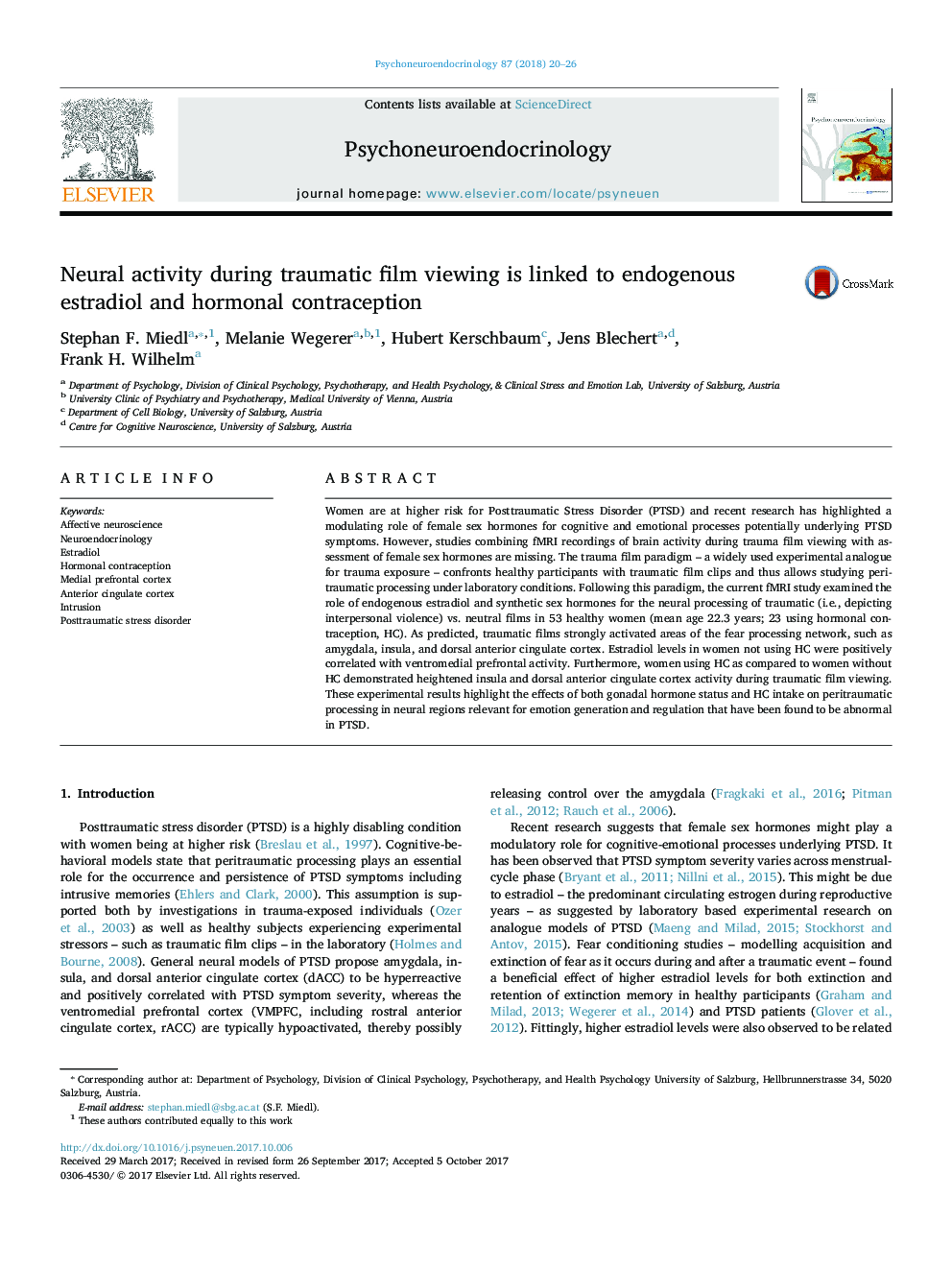| Article ID | Journal | Published Year | Pages | File Type |
|---|---|---|---|---|
| 4934149 | Psychoneuroendocrinology | 2018 | 7 Pages |
â¢Traumatic films activated areas of the fear processing network.â¢Estradiol levels in women were positively correlated with rACC and VMPFC activity.â¢Hormonal contraception went along with enhanced traumatic processing.
Women are at higher risk for Posttraumatic Stress Disorder (PTSD) and recent research has highlighted a modulating role of female sex hormones for cognitive and emotional processes potentially underlying PTSD symptoms. However, studies combining fMRI recordings of brain activity during trauma film viewing with assessment of female sex hormones are missing. The trauma film paradigm - a widely used experimental analogue for trauma exposure - confronts healthy participants with traumatic film clips and thus allows studying peritraumatic processing under laboratory conditions. Following this paradigm, the current fMRI study examined the role of endogenous estradiol and synthetic sex hormones for the neural processing of traumatic (i.e., depicting interpersonal violence) vs. neutral films in 53 healthy women (mean age 22.3 years; 23 using hormonal contraception, HC). As predicted, traumatic films strongly activated areas of the fear processing network, such as amygdala, insula, and dorsal anterior cingulate cortex. Estradiol levels in women not using HC were positively correlated with ventromedial prefrontal activity. Furthermore, women using HC as compared to women without HC demonstrated heightened insula and dorsal anterior cingulate cortex activity during traumatic film viewing. These experimental results highlight the effects of both gonadal hormone status and HC intake on peritraumatic processing in neural regions relevant for emotion generation and regulation that have been found to be abnormal in PTSD.
